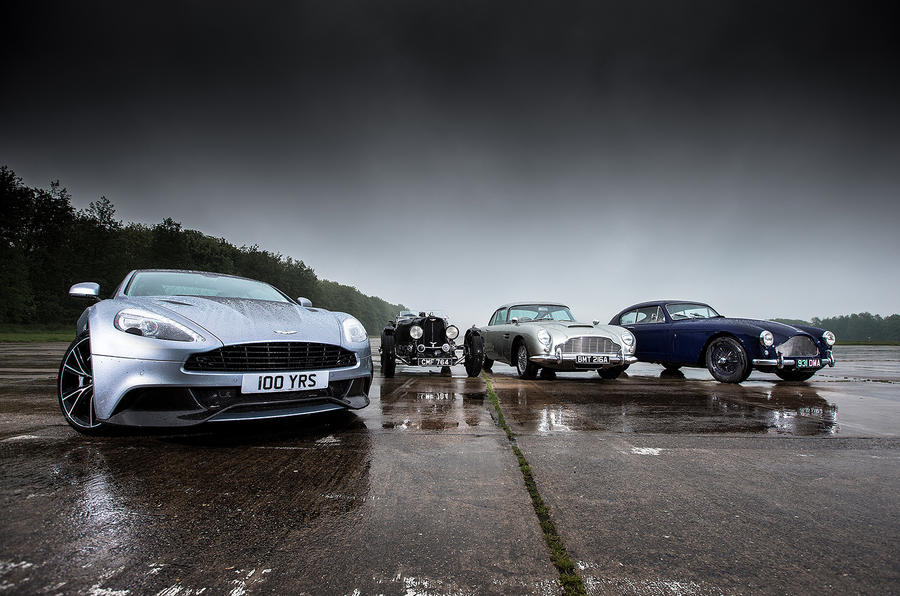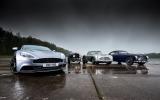The history of Aston Martin is so inordinately complex and, at times, dysfunctional and precarious that it makes the British monarchy look positively straightforward and well adjusted.
There have been times in the past 100 years when Aston Martin has been the most coveted brand on earth, and others when the boss has gone to work in the morning fully expecting to lock the gates for good by sundown. The late Victor Gauntlett told me it was once even helped out by Saddam Hussein – whose troops were good enough to torch all of the Astons belonging to the Kuwaiti royal family in 1990, their replacements paying the wages for a few crucial months.
The name may not be quite as blue-blooded as Rolls-Royce, or as steeped in competition success as Bentley or Jaguar, but I’d wager that if you ask the world to name Britain’s most coveted car brand, more would say ‘Aston Martin’ than any other.
Watching these four cars getting slowly soaked on a concrete runway in the middle of a vast V-bomber airfield in Leicestershire, I’m not surprised. We’d have struggled to find worse weather or a more featureless location and still, individually and collectively, they look utterly gorgeous. They are here, plucked from across time, to tell us more about this most enigmatic of marques and to see what traces of the character of the originals have been preserved in this centenary year.
About now, you’ll be wondering about the cars that are not here. There are so many: there’s no 2-Litre Sports, the car retrospectively entitled the DB1 – the first of the David Brown Astons. And there are no racers. Nor is there any representation of the V8s built in the 1970s, 1980s and 1990s. If I could have had one more (given that the DB7 is examined elsewhere on these pages), it would have been an ‘Oscar India’ V8 Vantage from the late 1970s. But four was the limit and the brief to illustrate the phases of Aston’s existence. They were never intended to be a neatly spaced chronology of Aston Martin history. Instead, we wanted simply the best from each phase.
We had to have a pre-war car and, once that decision was made, it was only ever going to be an Ulster, the ultimate development of technical director Augustus ‘Bert’ Bertelli’s design for a proper British sports car.
Next, we needed the ultimate development of the original David Brown Aston Martin and the last of the cars built at Aston’s home in Feltham. Technically a DB2/4 MkIII but universally known as the MkIII (and never to be described as a DB3), this is the least well known of the Astons here but, as we shall see, our story would be incomplete without it.




























































Join the debate
Add your comment
Future?
Its great past is beyond question, but its future just can't be sustainable presently, all its resources are being put into survival, treading water rather than advancing in the way other companies of its ilk are and being bought out would appear to be the only way to secure the future of the company.
Ford V6s
"And that engine, designed last century and derived from a pair of Ford V6s as it may well be, is still magnificent"
I long for the day when automotive journalists stop going on about the engine just being two Ford V6s. They used the knowledge of the V6 block to build a V12. Taking something that had been through a significant amount of engineering and reliability testing and built from it a magnificent enging.
So far related from the Ford engine that you couldn't walk in to a Ford dealership and ask them to service it. It was, without any doubt, an Aston Martin Engine.
It actually is a Ford/Cosworth venture
The engine actually was 2 V6s from Ford, co developed by Cosworth. Aston Martin as a company didn't have much put on it appart from their name. They of course did fettle with the engine later on, but originally, it came from Ford.